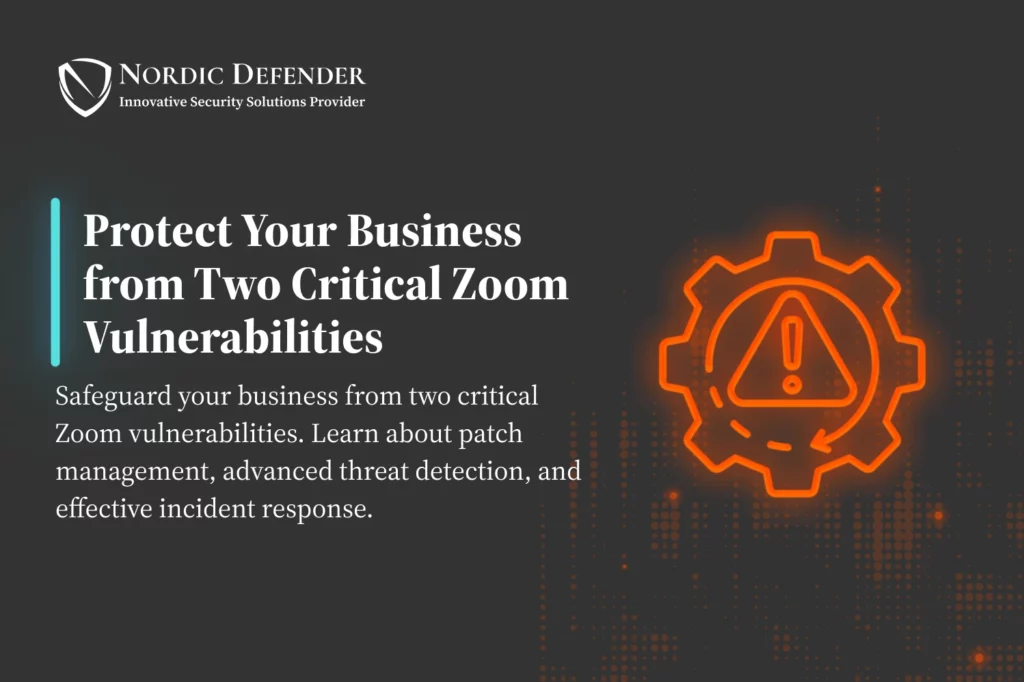In the ever-evolving landscape of cybersecurity, the recent vulnerabilities discovered in Zoom’s Workplace Apps, SDKs, and Rooms Clients have raised significant concerns. These flaws, specifically identified as CVE-2024-39825 and CVE-2024-39818, pose serious risks by allowing attackers to escalate privileges on compromised systems. This could potentially give unauthorized users access to sensitive data and critical system functions.
The Technical Breakdown
Zoom’s vulnerabilities highlight a crucial aspect of software security: the importance of maintaining strict control over privilege levels within applications. The identified flaws allow attackers to exploit weaknesses in the software’s privilege management, gaining higher levels of access than intended by the system’s security protocols. In simpler terms, an attacker could potentially take over key functions of an application, which is usually restricted to authorized users only.
These vulnerabilities are particularly alarming due to their cross-platform nature, affecting users across various operating systems such as Windows, macOS, Linux, iOS, and Android. This broad impact underscores the importance of a multi-faceted approach to cybersecurity that addresses risks across all devices within an organization.
Comprehensive Preventive Strategies Against Two Critical Zoom Vulnerabilities
- Patch Management and Software Updates:
- Immediate Action: The most effective immediate response is to apply the latest patches provided by Zoom. This cannot be overstated—delayed updates can leave your systems vulnerable to exploitation.
- Automated Updates: Implementing automated update mechanisms can ensure that all software within your organization, including third-party applications like Zoom, is consistently up to date. This reduces the window of vulnerability between the discovery of a flaw and its patching.
- Enhanced Privilege Management:
- Role-Based Access Control (RBAC): Enforce strict role-based access controls within your systems. This ensures that only users who absolutely need administrative access are granted such privileges. By limiting the number of users with high-level access, you significantly reduce the potential impact of a compromised account.
- Just-In-Time (JIT) Access: Consider implementing Just-In-Time access protocols, where elevated privileges are granted only for the time necessary to perform a task, and then automatically revoked. This minimizes the time window during which an attacker could exploit escalated privileges.
- Threat Detection and Monitoring:
- Behavioral Analytics: Utilize advanced behavioral analytics to monitor for unusual activities that may indicate an attempt to exploit vulnerabilities. This includes tracking unexpected privilege escalation, unauthorized access attempts, and other anomalies.
- Zero Trust Architecture: Adopt a Zero Trust approach, which assumes that threats could originate both externally and internally. This framework requires continuous verification of user identity and device health, regardless of whether they are inside or outside the corporate network.
- Incident Response and Recovery:
- Comprehensive Incident Response Plan: Ensure that your incident response plan is robust and includes specific procedures for handling privilege escalation incidents. Regular drills and simulations can help your team prepare for real-world scenarios.
- Backup and Recovery Solutions: In the event of a successful attack, having reliable backup and recovery solutions in place is essential. Regularly updated backups stored in secure, offsite locations can help restore systems to their pre-attack state, minimizing downtime and data loss.
Conclusion: Building a Resilient Security Posture
The discovery of these critical vulnerabilities in Zoom underscores the importance of a proactive and comprehensive cybersecurity strategy. While the immediate application of patches is vital, long-term protection requires a more holistic approach. This includes implementing rigorous access controls, continuous monitoring for threats, and maintaining a robust incident response framework.
By adopting these practices, your organization can significantly reduce its risk exposure and build a resilient security posture that can withstand not just the current threats but also those that will inevitably emerge in the future.
For businesses in Sweden and beyond, partnering with a specialized cybersecurity provider can offer the expertise and resources needed to stay ahead of threats and protect valuable digital assets.
